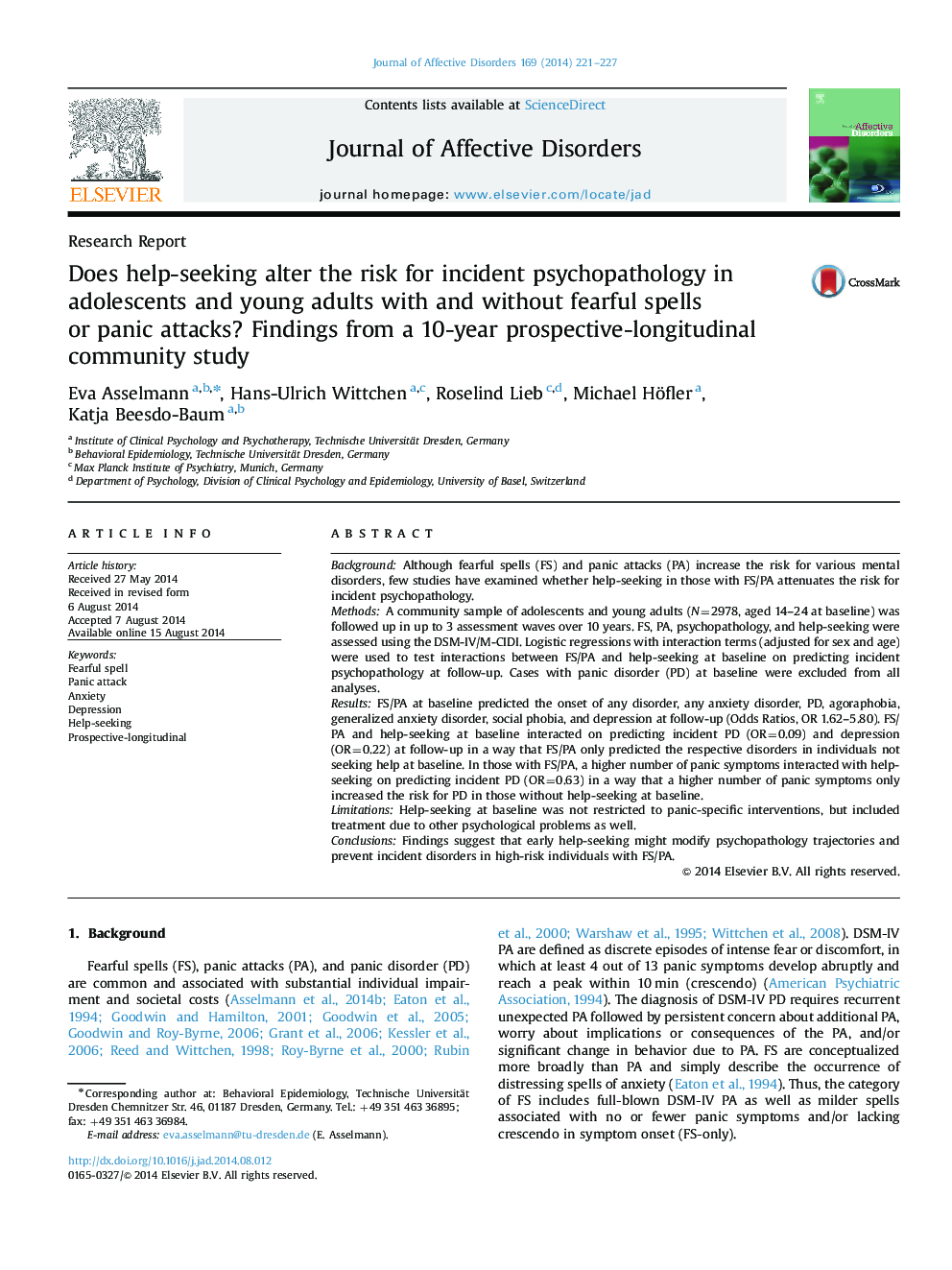| کد مقاله | کد نشریه | سال انتشار | مقاله انگلیسی | نسخه تمام متن |
|---|---|---|---|---|
| 6232458 | 1608156 | 2014 | 7 صفحه PDF | دانلود رایگان |
BackgroundAlthough fearful spells (FS) and panic attacks (PA) increase the risk for various mental disorders, few studies have examined whether help-seeking in those with FS/PA attenuates the risk for incident psychopathology.MethodsA community sample of adolescents and young adults (N=2978, aged 14-24 at baseline) was followed up in up to 3 assessment waves over 10 years. FS, PA, psychopathology, and help-seeking were assessed using the DSM-IV/M-CIDI. Logistic regressions with interaction terms (adjusted for sex and age) were used to test interactions between FS/PA and help-seeking at baseline on predicting incident psychopathology at follow-up. Cases with panic disorder (PD) at baseline were excluded from all analyses.ResultsFS/PA at baseline predicted the onset of any disorder, any anxiety disorder, PD, agoraphobia, generalized anxiety disorder, social phobia, and depression at follow-up (Odds Ratios, OR 1.62-5.80). FS/PA and help-seeking at baseline interacted on predicting incident PD (OR=0.09) and depression (OR=0.22) at follow-up in a way that FS/PA only predicted the respective disorders in individuals not seeking help at baseline. In those with FS/PA, a higher number of panic symptoms interacted with help-seeking on predicting incident PD (OR=0.63) in a way that a higher number of panic symptoms only increased the risk for PD in those without help-seeking at baseline.LimitationsHelp-seeking at baseline was not restricted to panic-specific interventions, but included treatment due to other psychological problems as well.ConclusionsFindings suggest that early help-seeking might modify psychopathology trajectories and prevent incident disorders in high-risk individuals with FS/PA.
Journal: Journal of Affective Disorders - Volume 169, 1 December 2014, Pages 221-227
